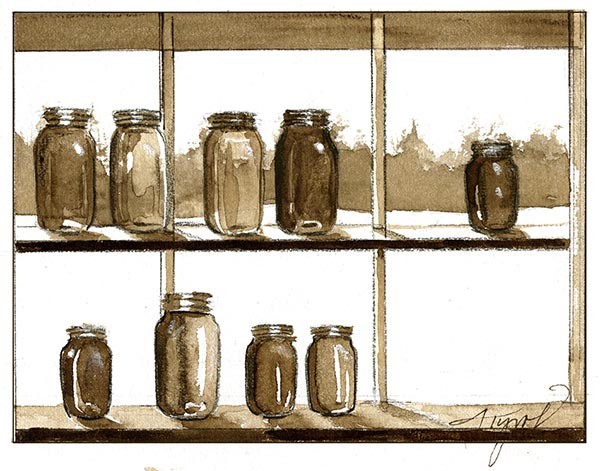
In maple country, it seems like everyone has a favorite syrup grade. Mine is U.S. Grade A dark amber. But soon, I’ll have to figure out how my favorite grade of the past jibes with a new system that several Northeastern states plan to adopt in the next few years, and that other states – as well as Canada – are also considering.
It turns out that, at least in New York, Vermont, and Maine, my favorite amber will soon be called either Grade A Amber, Rich Taste or Grade A Dark, Robust Taste, depending on which end of the amber spectrum I prefer. Lighter syrups tend to have more delicate flavors, while darker ones are more intense – a relationship on which the old maple syrup labels, that described color only, relied.
So why doesn’t all syrup taste the same? Sugars in maple sap undergo a series of changes during collection and processing that influence both color and flavor. “The most important determinant of what flavor develops in syrup are the reactions that occur when heat is applied as we process sap into syrup in the evaporator,” explained Abby van den Berg, a researcher at the Proctor Maple Research Center at the University of Vermont.
Sugar maple sap fresh from the tree is roughly 98 percent water. The rest is dominated by sucrose. As the sap drips into the tube, bucket or bag, it picks up microbes. The microbes, including bacteria and yeast, break the sucrose molecule in two. This process is called inversion, and the sugars it produces – fructose and glucose – are called invert sugars.
The microbes break sucrose up because invert sugars are easier for them to digest. As the sugaring season progresses, there’s a tendency for more microbes to be present in sap and break more and more of the sucrose into invert sugars.
Amino acids in maple sap increase over the season as well. Researchers believe this increase is due to metabolic changes within the trees as they leave winter dormancy and prepare for the growing season.
When maple sap is processed, it is usually piped into an evaporator divided into several compartments. Sap entering the evaporator is made up of about two percent sugar. As the sap passes through each heated compartment, water evaporates, concentrating the sap into syrup (and killing those microbes). By the time the product is piped out of the evaporator, it is approximately 67 percent sugar.
While the sap is being cooked in the evaporator, critical chemical reactions occur that affect syrup color and flavor. Most of those are nonenzymatic browning reactions, a broad term for reactions that result in color and flavor development in food. Sugars play a key role.
“Sucrose is not as reactive as its two component parts,” said van den Berg. “So generally, the more invert sugars you have in your sap, the greater the level of those nonenzymatic browning reactions.” The more nonenzymatic browning, the darker and more flavorful the syrup.
A Maillard reaction is a more specific term for browning; it involves the reactions between invert sugars and amino acids (and other nitrogen-rich compounds) in food. “Much of what is yummy about toast has a lot to do with Maillard reactions that develop color and flavor in that toast,” explained van den Berg.
No surprise, then, that the yumminess of maple syrup also has to do with Maillard reactions. More fructose and glucose, plus more amino acids, equals more Maillard reactions and richer flavor. That’s why late-season syrups, which generally have greater microbial concentrations, have more intense colors and flavors.
But too much of a good thing – in this case, microbes – can create an unmarketable off- flavor. That’s why many maple syrup makers clean their equipment scrupulously.
These are just the basics; the more closely you study syrup flavor, the more complicated things become. Researchers have identified over 200 flavor compounds in syrup. Sugar degradation (the breakdown of sugars when heated) also plays a part, as do compounds produced by sugar maple trees as defenses against insects and injury.
“It’s very, very complex,” said van den Berg, “and we know quite little in the big picture.”
In any case, I know I like my dark amber – I mean Dark, Robust Taste.


Discussion *